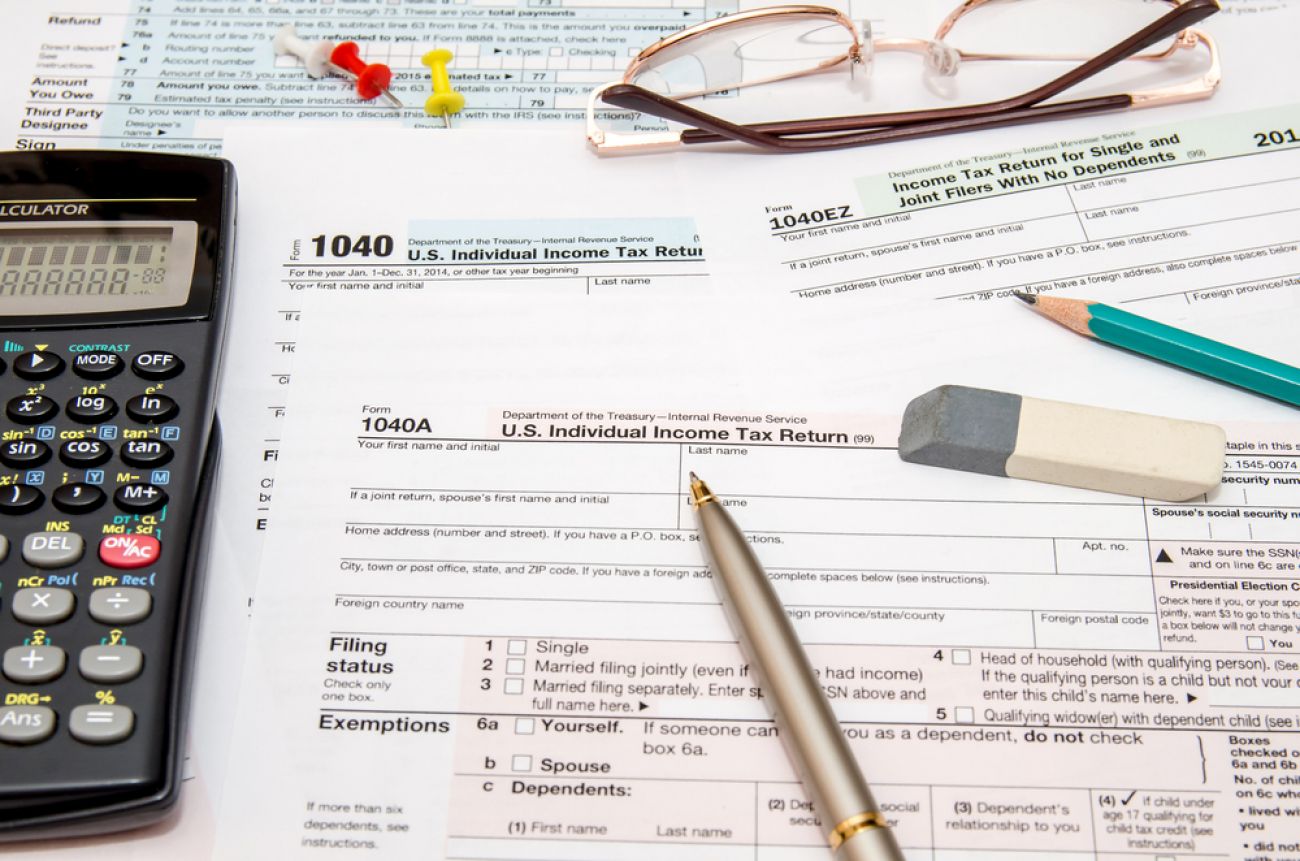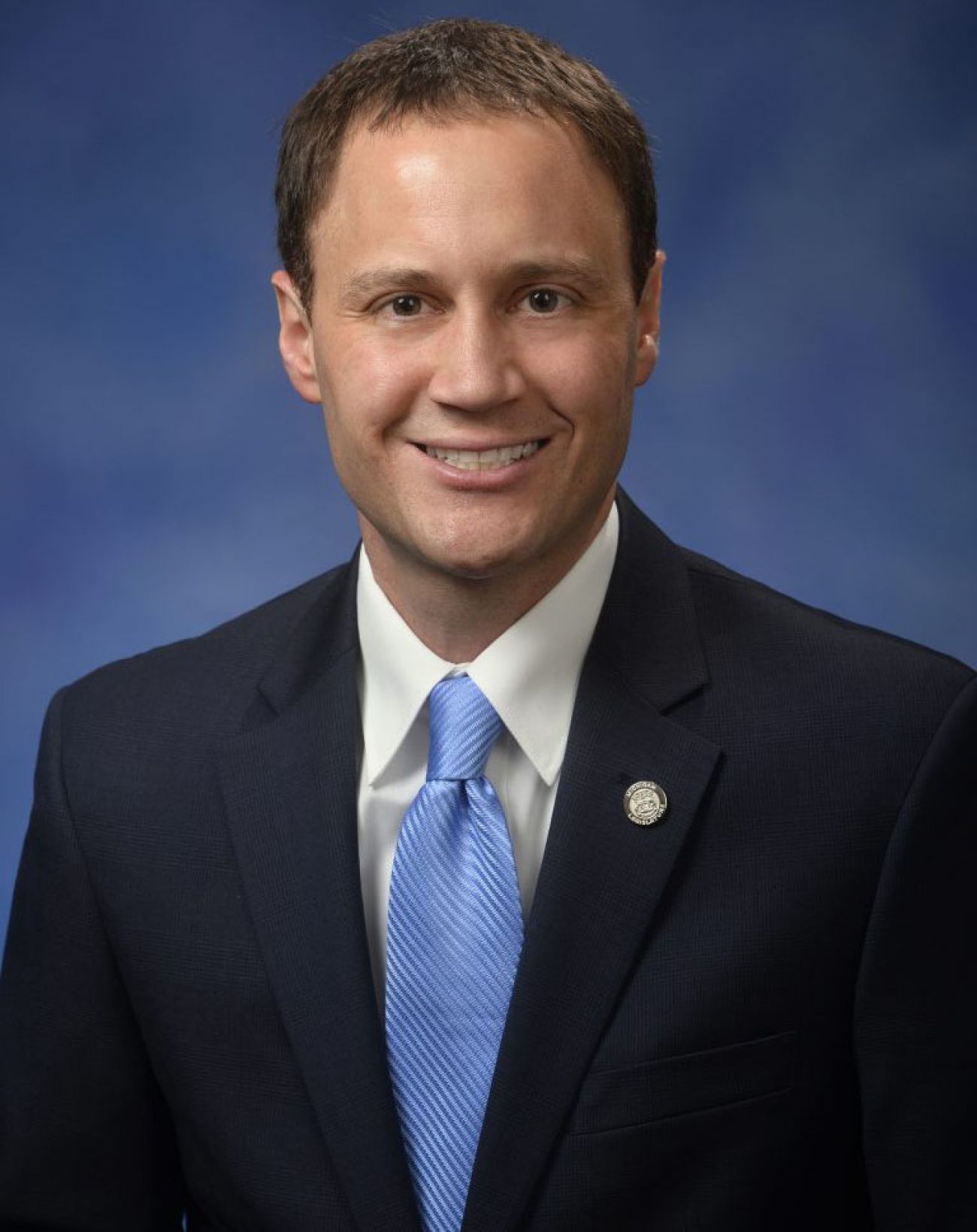In bid to eliminate state income tax, fears of another Kansas


In July 2012, two months after GOP Kansas Gov. Sam Brownback signed a substantial state income-tax cut into law, he issued a forecast: “Our new pro-growth tax policy will be like a shot of adrenaline into the heart of the Kansas economy.”
The economic jolt that ensued was perhaps not what Brownback envisioned.
From the end of 2012 to early 2016, Kansas’ GDP grew at less than half the national rate. Cuts in state revenue forced K-12 schools to close early and led to funding reductions for universities. To balance the budget, Brownback siphoned hundreds of millions of dollars from state highway funds. Moody's twice downgraded the state's bond rating. As of November, Kansas was still laboring to close a $345 million budget hole.
The 2012 cut was to be, according to those who advised Brownback, the first step toward eliminating that state's income tax.
While Kansas took a different tack, ending the state’s income tax is also the goal of GOP lawmakers in recently announced measures in Michigan’s House and Senate.
House Speaker Tom Leonard of DeWitt is backing a bill sponsored by Rep. Lee Chatfield of Levering that would cut the state's 4.25 percent income tax to 3.9 percent in January 2018. The plan then calls for further rollbacks of 0.1 percent each year until the tax is eliminated over 40 years. State Sen. Jack Brandenburg of Macomb County, meanwhile, said he intends to introduce a bill to scrap the income tax over just five years.
Both plans would erase what is today a $9 billion annual revenue stream – more than a third of total state tax revenue. Backers of the proposals have not said where funds to compensate for that loss would come from.
The proposals are stirring a familiar economic debate, amid warnings by critics that the tax plans could render Michigan another Kansas -- while shifting a higher tax burden on state residents with the lowest incomes.
The House bill would slash income tax revenue by more than $800 million in its first year, and about $200 million a year thereafter.
In a statement to Bridge Magazine, Leonard spokesman Gideon D'Assandro said: “We would rather have Michigan's hard-working taxpayers keep the money they've earned, instead of a government agency. They are able to make the best decisions for their families.”
Who Pays What
Wealthier Michigan residents pay a smaller share of income in state and local taxes.
Less than $17,000: 9.2 percent
$17,00 to $34,000: 9.4 percent
$34,000 to $56,000: 9.2 percent
$56,000 to $88,000: 9.0 percent
$88,000 to $165,000: 7.7 percent
$165,000 to $392,000: 6.8 percent
More than $392,000: 5.1 percent
Source: Institute on Taxation and Economic Policy
D'Assandro said Leonard is “open to having a conversation” over how the state could compensate for lost revenue. But he did not specify where any spending cuts might land.
As for any comparison to Kansas, D'Assandro noted that the House’s 40-year tax plan “is responsibly phased in over a long period of time.”
A spokesman for GOP Gov. Rick Snyder underscored concern about making up lost revenue, however.
Press secretary Anna Heaton said Snyder wants proof there is “adequate” revenue from other sources to make up the difference. Adding to further stress on the current budget, a Snyder-appointed commission said in December that Michigan needs about $4 billion a year more than it currently takes in to upgrade its transportation, water and communications infrastructure.
“There would need to be concrete data to demonstrate that there is adequate revenue from sources besides the income tax to ensure services for residents and investing in our statewide infrastructure would not be adversely affected,” Heaton said.
Republicans, including Leonard, describe a direct connection between lower taxes and economic growth, a central tenet of supply-side economics and conservative economic analysis.
Michael LaFaive of the Midland-based Mackinac Center for Public Policy, a free-market think tank, called the state House tax proposal “a good first step.” He said that there is no question Michigan “is still taxed too much. We should be a leader in efficient government.
“There is a very large body of academic literature on the link between taxes and economic growth. The literature almost always shows the negative link between high taxes and growth.”
He cited a 2010 academic study of post-World War II federal tax rates by the American Economic Association that found that one category of tax increases resulted in a subsequent reduction of GDP (A conclusion that itself has come under criticism).
This position has produced pushback from budget analysts including Michigan State University economist Charles Ballard, who warns that Michigan's “obsession with tax cuts” has already inflicted great harm to the state's infrastructure and quality of life.

Ballard cited federal analysis showing state and local taxes as a share of personal income have already steadily fallen in Michigan from more than 13 percent in 1972 to 9.6 percent in 2011 – resulting in a net revenue loss of about $10 billion in today’s dollars.
“If we had raised only a fraction of that, we would have been able to avoid poisoning children in Flint,” said Ballard, referring to the ongoing lead crisis that resulted from government errors while Flint was under state emergency financial management. “We have sacrificed a great deal of our quality of life on the altar of tax cuts.”
Ballard contends that tax levels are less important to determining economic growth than other factors, including the skill and education level of the workforce. “For the most part, the states with the highest incomes are not low-tax states,” he said. “Instead, the most affluent states are the ones with the most highly educated populations.”
Michigan in the middle
To be sure, the question of whether Michigan is taxed too much or too little remains a matter of perspective and ideology. So, too, is the debate over how much taxpayers of different income levels should pay.
Overall, according to the Tax Foundation, a Washington D.C. tax research organization, Michigan ranked 25th among the 50 states in the share of income paid in fiscal 2012 paid toward all state and local taxes, with 9.4 percent of income paid in those taxes. That was a lower percentage than surrounding Midwest states, with Indiana residents paying 9.5 percent, Ohio at 9.8 percent, Minnesota 10.8 percent and Wisconsin and Illinois at 11 percent each.
Seven states - Alaska, Florida, Nevada, South Dakota, Texas, Washington and Wyoming – levy no state income tax, with four of those states relying on higher sales taxes than Michigan imposes. Tennessee and New Hampshire tax only investment interest and stock dividends.
Critics of these tax cuts note that states with no income tax tend to put a higher share of the tax burden on low-income residents.
According to a 2015 report by the Institute on Taxation and Economic Policy, a nonpartisan research organization, five states with no income tax are ranked among the top 10 most regressive in tax structure. In reaching its conclusion, the report compared the share of personal income paid at different income levels in state and local taxes.
Michigan ranked 29th among the 50 states for tax fairness with the 1st-ranked state, Washington, considered the most regressive. Michigan is among eight states – out of 41 with an income tax – that levy a flat income tax. The other 33 rely on a progressive formula in which the wealthy pay a higher percentage.

In non-elderly households in Michigan, those earning $17,000 to $34,000 paid 9.4 percent of their income toward the overall cost of state and local taxes; those between $88,000 to $165,000 paid 7.7 percent; and those earning more than $392,000 – the top 1 percent – paid 5.1 percent of their income in taxes.
In sales tax alone, those at the bottom 20 percent of income pay 6.3 percent of their income on sales tax. That's eight times higher than the 0.8 percent share paid by the top 1 percent.
If Michigan tried to make up lost income revenues through a hike in the sales tax, critics say the burden on low-earners would grow even more. Currently, Michigan gets just over a quarter of its tax revenue from the state’s 6 percent general sales tax. That tax would have to be doubled to 12 percent to make up for lost income tax revenue (Any such increase would have to be approved by voters).
That would give Michigan the highest sales tax in the nation.
Fear of more spending cuts
If, instead, Lansing turns to spending cuts alone to make up for cuts in the income tax, the results would be “devastating,” said former state Treasurer Robert Kleine, who served under Democratic Gov. Jennifer Granholm from 2006 to 2010.
“If your idea is to get rid of state government, this is a good way to do it. It would be just cuts, cuts, cuts, every year until everything is gone. I'm not sure you could operate schools. There would be no support for higher education. You would have to cut State Police way back. You would have to close a bunch of prisons and let people out.”
Taxing the Poor
Wiping out the state income tax could lead to a hike in sales tax, which hits low-income residents hardest. The share of income paid in 2015 in sales and excise by income class
Lowest 20 percent: 6.3 percent
Second 20 percent: 5.0 percent
Middle 20 percent: 3.9 percent
Fourth 20 percent: 3.1 percent
Next 15 percent: 2.3 percent
Next 4 percent: 1.6 percent
Top 1 percent: 0.8 percent
Source: Institute on Taxation and Economic Policy
Kleine said there is evidence in everything from roads to higher education that Michigan can ill afford such cuts. Michigan ranked 50th in 2013 in per capita state and federal spending on highways. A 2015 report found that Michigan cities including Detroit, Grand Rapids, Flint and Ann Arbor had among the worst roads in the nation.
And in higher education, Michigan ranked 15th lowest in 2014-15 in funding per student for public universities.
“How much lower can you go?” Kleine asked.
Gilda Jacobs, president and CEO of the Michigan League for Public Policy, said she considers the House tax plan a recipe for “financial chaos,” particularly if it results in a higher sales tax.
“It would really cut into their ability to pay their utilities, to pay their rent, pay for car insurance,” she said. “Those are real dollars that come out of their income.”
Anthony Minghine, associate executive director of the Michigan Municipal League, said that his organization has concluded that Michigan communities have already lost more $6 billion in statutory revenue sharing since 2002 because of state cuts to the formula. That has left many cities struggling to balance budgets and maintain deteriorating parks and crumbling streets and sewer systems.
“There's no ability to take another nickel out of our of local government. About 85 percent of our GDP comes out of our metro areas. If we disinvest in our communities, we are crippling our economic engine,” Minghine said.
Another hurdle: The $1.2 billion road funding bill signed into law in 2015 is scheduled to siphon $600 million a year from income tax receipts for road repair by the 2020-21 fiscal year. That's on top revenue lost from a $1.8 billion annual business tax cut approved in 2011.
Most income tax revenue goes toward the state’s general fund, which pays for a variety of government functions. Just under one-third goes to K-12 public schools.
Doug Pratt, spokesman for the Michigan Education Association, said Michigan K-12 schools would be decimated should that revenue source be wiped out and not replaced.
“The $64,000 question here is where is the money going to come from? Outright elimination of the income tax would put a huge hole in the school aid fund.”
But LaFaive, of the Mackinac Center, contends there is plenty of fat to cut in Michigan government.
In 2014, he identified $2.1 billion that should be cut from the state’s $55-billion budget, which includes both state and federal funding. That would include eliminating statutory revenue sharing, which is money the state shares with municipalities for basic operations, a savings that was then estimated of more than $400 million. He also recommended shutting down the Michigan Economic Development Corporation, a savings of $300 million, and ending the $280-million subsidy of the University of Michigan.
“This institution is large and rich enough to pay its own way,” LaFaive said of U-M.
How Michigan Compares in the Midwest
The share of income paid in 2012 in state and local taxes
Michigan: 9.4 percent
Indiana: 9.5 percent
Ohio: 9.8 percent
Minnesota: 10.8 percent
Illinois: 11 percent
Wisconsin: 11 percent
Source: The Tax Foundation
The case for more tax revenues
Ballard, though, said that higher taxes can mean greater investment in public services, community quality of life, higher education -- and, in the end, greater prosperity.
Proponents of this view say that states with the highest state and local taxes also rank among the highest in median household income and lowest in poverty. Conversely, they say, many states with low state and local tax rates are near the bottom in household income and near the top in poverty.
In 2014, New Jersey ranked second in the nation with median household income of nearly $72,000, while having the fourth lowest poverty rate of 11.1 percent. It also had the second highest state and local tax rate as a share of income.
Maryland had the highest median household income, at $73,971, while its poverty rate of 10.1 percent was second lowest. Its state and local tax rate was seventh highest in the nation.
Meanwhile, Mississippi was at the bottom in income, with median household income of under $40,000. It had the nation's highest poverty rate, at 21.5 percent. Its state and local tax rate as a share of income was 11th lowest in the nation.
Alabama ranked 47th in median household income at $42,830, while its poverty rate of 19.3 percent was fourth highest. Its state and local tax rate was tenth lowest in the nation.
As for his plan to eliminate the state income tax within five years, Sen. Brandenburg would not say for sure how lost revenue would be made up, telling Bridge: “Everything is on the table.”
He did float the prospect of an across-the-board spending freeze in all sectors of the budget to recoup money lost from income tax payments.
Brandenburg also conceded the sales tax might have to be hiked to make up some of the difference, but declined to give a percentage. In his view, hiking the sales tax would not be a great burden. “A sales tax (hike) is probably the least onerous way if you're going to put a tax on somebody,” he said.
See what new members are saying about why they donated to Bridge Michigan:
- “In order for this information to be accurate and unbiased it must be underwritten by its readers, not by special interests.” - Larry S.
- “Not many other media sources report on the topics Bridge does.” - Susan B.
- “Your journalism is outstanding and rare these days.” - Mark S.
If you want to ensure the future of nonpartisan, nonprofit Michigan journalism, please become a member today. You, too, will be asked why you donated and maybe we'll feature your quote next time!

